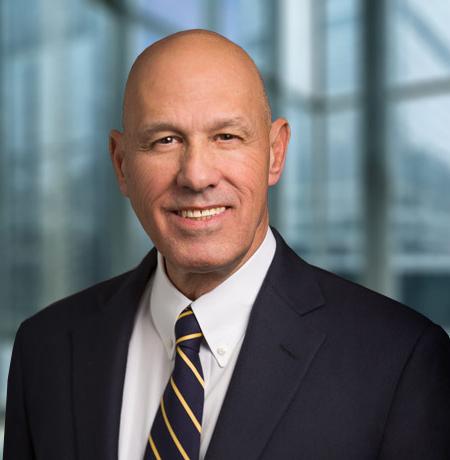
Amazon is experimenting with same-day delivery by drones, delivering packages inside your home even when you are away, and eliminating traditional check-out from retail stores. These are just the latest examples of how companies like Amazon, Google, and Uber continue to build their successes in an unending effort to make the “last mile” shorter and then shorter still.
The “last mile” refers to the final step by which consumers receive goods or services. Today, companies are focused on tackling the last mile in ways and with levels of convenience that were previously unimagined. Successful Internet-era companies are never satisfied with the level of convenience in the last mile: Five clicks could be three clicks; two-day delivery could be 30-minute delivery; opening an app could be a voice command; a product search could be anticipated by artificial intelligence. The race to find the most innovative ways to shorten the last mile is the race for dominance in the Internet economy. The same race will play a large role in the healthcare winners of the future.
Until recently, traversing the last mile has been largely the responsibility of the consumer: driving through traffic, finding parking, hailing taxis, waiting in lines, picking up packages at a post office, or hoping packages don’t get stolen from the front porch. Consumers accepted this situation because few better options were available. Companies accepted this situation because changing it would be difficult and expensive, and change seemed unnecessary as long as consumers continued to tolerate their role.
In the Internet economy, however, consumers are learning that virtually any service can be accessed from your couch via smartphone or other voice-activated device. The result is intense competition among creative, aggressive, well-capitalized companies to develop the best platform to remove friction from the last mile for consumers. At the same time, legacy providers of goods and services need to determine the business implications of competing to fulfill these new consumer expectations.
Ignore, Compete, or Participate?
Food delivery is a prime example of the dynamics of last-mile competition. GrubHub, DoorDash, UberEats, and Amazon Restaurants are just a few of the services launched within the past two years to offer online ordering and fast delivery from restaurants, from fast food to high-end cuisine. Investment firm Cowen forecasts 79 percent growth in the total U.S. food delivery market between 2017 and 2022. Morgan Stanley finds online orders to be more than 50 percent of the food delivery market and growing.
Competition is intense among these online delivery platforms, with GrubHub recently being eclipsed by UberEats, due to Uber’s user base, brand recognition, and logistics expertise. The ultimate showdown to be the platform of choice likely will be among titans: Uber, Google, and Amazon.
For legacy restaurants, the rise of these delivery platforms poses a fundamental business question that will resonate within any industry experiencing disruption, including healthcare: ignore, compete, or participate?
Ignore. Restaurants that ignore the rise of digital delivery put themselves at considerable risk of business erosion. In essence, they are self-selecting out of the contemporary digital environment.
Compete. Only the largest chains have the scale and capital to develop a competing digital delivery service with anything close to the reach and performance of giants like Uber. One example is Domino’s Pizza, whose historic value proposition has been delivery speed. Domino’s moved early and aggressively toward developing digital capabilities, and in recent years has been called a tech company that makes pizza. Domino’s is well known for its Domino’s Tracker, which allows people to follow their pizza from preparation to delivery, even purportedly naming the people who cook and deliver the pizza.
Participate. Most restaurants have little choice but to participate with multiple existing platforms, accepting the terms that those platforms set. Although this participation is a hedge against loss of relevance, it comes with costs, risks, and operational challenges.
The most obvious cost is the cut of revenue taken by delivery services, which is in the neighborhood of 20 percent. Restaurateurs might hope that additional volume will make up for this revenue loss, but that is by no means a sure bet. These apps typically feature a huge number of restaurants with comparative consumer ratings, introducing more intense, data-fueled competition among participants.
Restaurants also are finding that their traditional operations need to be changed for an environment in which a growing percentage of patrons never enter the restaurant. Some are developing menus with an eye toward food that travels well. Some are redesigning the packaging used for food delivery. Some are setting up separate work spaces to manage delivery orders. As time goes on, restaurants may even find that they do not need the same physical footprint or workforce configuration.
Reinventing Healthcare’s Last Mile
This massive shift in food delivery arises from the desire to remove the relatively modest amount of friction involved in visiting a restaurant.
It’s safe to say that healthcare’s last mile has a bit more friction: Calling to make an appointment. Waiting days or weeks for that appointment. Taking off work for the appointment. Driving to, parking at, and finding the provider’s office. Filling out paperwork—often multiple times. Waiting to be seen by the provider. Going to separate locations for lab tests, scans, or X-rays. Waiting to hear from the provider about the results. Visiting a provider to have a prescription refilled. Dealing with insurance approvals. Dealing with communication among providers. Accessing medical records. Understanding statements. Paying invoices.
On the last mile, legacy healthcare organizations are playing catch-up. Health systems are working on online scheduling, virtual visits, rapid retail clinics, and consumer-provider messaging. Yet, while healthcare is pursuing these fledgling efforts to remove friction from the healthcare experience, Amazon is developing stores that have no cashiers and no checkout lines, Google is developing self-driving cars, and Spotify is populating customized music playlists. Catching up with that level of innovation is daunting to say the least.
As is the case with digital ordering and food delivery, state-of-the-art convenience in healthcare’s last mile requires a level of intellectual and financial capital that few organizations can access. Even the largest healthcare organizations are partnering with tech leaders on these initiatives. Such partnerships are not panaceas, however. Organizations need to have a clear understanding of how collaborating with other organizations for services such as urgent care, virtual visits, and precision medicine will affect volume, revenue, and consumer loyalty. The last outcome legacy healthcare organizations want is to find themselves a commodity service within a larger and more popular healthcare platform.
And such a platform may be coming. Amazon is reported to have a “secret skunkworks lab” exploring “a platform for electronic medical record data, telemedicine, and health apps for existing devices like the Amazon Echo.” Google recently launched Project Baseline to collect comprehensive health data in order to map disease and prevention. Perhaps most telling, Apple recently explored acquiring two medical clinic chains, which would open the door to a very different and very scalable healthcare experience.
Maintaining Loyalty
Legacy healthcare organizations enjoy an extraordinarily close connection with their communities. People identify with their providers based on years-long or generations-long relationships.
A San Francisco restauranteur recently noticed that “the faces we used to see day in and day out, we started to see less and less.” When he would run across one of the formerly familiar faces, he would ask, “Did we do something wrong? Why don’t we see you as much anymore?” They would reply, “Oh, we’re just ordering delivery now. The restaurants are so busy, we don’t want to wait in line.”
This anecdote contains a profound truth for healthcare providers—a truth that emerging nontraditional competitors understand very well. Healthcare providers need to recognize that their consumers may be loyal to a point, but that they are coming to expect a new kind of experience. To maintain that loyalty, providers will have to learn the lessons of Amazon, Google, and others, and make the last mile far, far easier to traverse.
